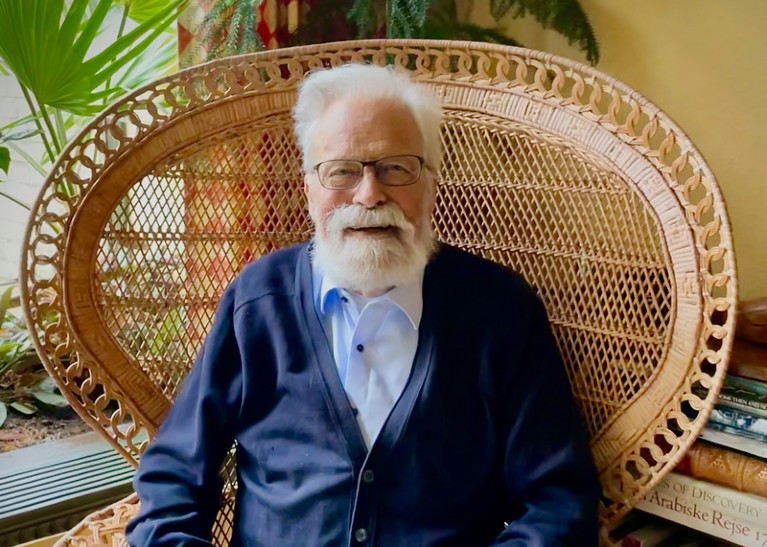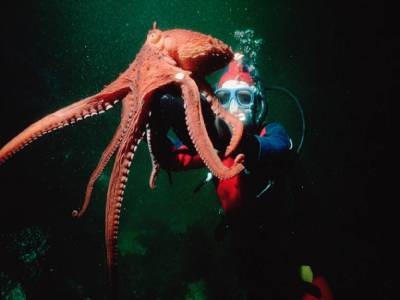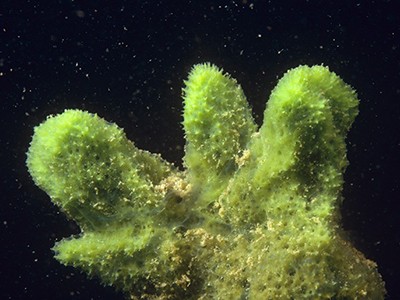
Credit: Leonid L. Moroz
Unravelling the winding paths that evolution has taken is a daunting task. Claus Nielsen was one of the few who dared put forward a comprehensive view of how today’s animal species originated and how they are related. His ‘trochaea’ theory of animal evolution was an important synthesis, integrating morphology, embryology and systematics. This comprehensive view was expanded on in his 2001 book Animal Evolution, which is now in its third edition.
Central to Nielsen’s proposal was the idea that the ancestors of most living animals stem from tiny larva-like creatures that swam using a band of tiny hairs, or cilia. His greatest expertise was in a class of microscopic invertebrates called the Entoprocta — an aquatic group with swimming larvae and sessile (attached to a substrate) adults. He provided a refined understanding of their life cycle, anatomy and position on the tree of life. Nielsen’s knowledge broadened to all invertebrate animal groups and he described dozens of new species of entoprocts, bryozoans, molluscs and annelids.
Octopuses used in research could receive same protections as monkeys
Nielsen was born in Copenhagen in 1938. His interest in zoology began in his school days, through collecting and identifying shells. In 1956, he began to study marine biology at the University of Copenhagen, where he was inspired by the lectures of Ragnar Spärck, a renowned shellfish biologist. Nielsen learnt that animal classification is a work in progress, and this challenge motivated his later work.
His doctoral thesis focused on entoprocts and, after winning the university’s gold medal, he received his PhD in 1964, and a doctor of science degree in 1972. In 1983, Nielsen moved from the Danish Marine Biological Laboratory in Helsingør (where he had been director from 1970 to 1975) to Copenhagen’s Zoological Museum (now the Natural History Museum of Denmark), which he directed from 1992 to 1996. He remained there for the rest of his career, becoming emeritus professor in 2008.
Nielsen’s trochaea theory built on his studies of larval entoprocts and ectoprocts, which swim with a ring of cilia (trochus in Greek means wheel). He was influenced by zoologist Ernst Haeckel’s biogenetic law (a theory of development and evolution proposed by Haeckel in the 1860s) and zoologist Berthold Hatschek’s 1878 idea of the ‘trochozoon’ as the common ancestor of bilaterally symmetric animals. Many marine groups, such as annelid worms, molluscs, starfish and sea urchins, also have larvae that use cilia to help these mostly sedentary animals to disperse.
Nielsen proposed that the last common ancestor of flies and humans (and all other bilaterally symmetrical animals) resembled such a swimming larva and that it later gave rise to bottom-dwelling adults in the animal groups of protostomes and deuterostomes independently. This was a bold idea with far-reaching implications for our understanding of animal evolution, and it prompted Nielsen to write his influential book.
Sponge cells hint at origins of nervous system
In Animal Evolution, he explored the relationships between animal groups in fascinating detail. The book covers the whole animal kingdom and combines diverse sources of evidence, including morphology, embryology, palaeontology and molecular biology. He did not shy away from proposing kinships and suggesting morphologies for animals’ ancestors even if the evidence was still thin. And, at the end of each chapter, he suggested how advances could be made. Clearly, Nielsen was unafraid of being proved wrong — later editions of his book were meticulously updated to account for findings (especially from molecular data) that meant some of his ideas had to be revised.
Nielsen’s enthusiasm for working out invertebrate relationships was infectious. He became the founding president of the International Society of Invertebrate Morphology and received two prestigious prizes in his field: the 2001 Alexander Kowalevsky Medal for evolutionary developmental biology and comparative zoology and the Linnean Medal for Zoology in 2015. Even as an emeritus professor, he continued to make seminal contributions, such as on the phylogenetic position of comb jellies and the evolution of the arthropod mouth.
Throughout his career, Claus was an individualist — he never led a research group with PhD students and postdocs, as most of us do, but he still collaborated freely. In person, he was engaging and friendly, getting along easily with students 60 years his junior.
For almost two decades, Claus taught on courses on animal diversity and evolution, including those we organized. He gave lectures on the diversity of the animal kingdom, outlining his theories for animal relationships, and shared his profound knowledge of animal diversity when taking students out on the research boat of the Kristineberg Marine Research Station in Sweden to trawl the mud and plankton for specimens. He was known to travel to fieldwork sites and courses with a tiny, governmentally sanctioned vial of cocaine to use as an ideal invertebrate anaesthetic.
Claus continued in his teaching role well into his eighties, sometimes wearing a smart bow tie under his waterproofs and waders. His expertise was always delivered with a gentle and dry sense of humour: we are left wondering about the intent of his paper titled Notes on boring bivalves from Phuket, Thailand (C. Nielsen Ophelia 15, 141–148; 1976).

 Octopuses used in research could receive same protections as monkeys
Octopuses used in research could receive same protections as monkeys
 Sponge cells hint at origins of nervous system
Sponge cells hint at origins of nervous system
 Cyberattacks on knowledge institutions are increasing: what can be done?
Cyberattacks on knowledge institutions are increasing: what can be done?
 It’s time to admit that genes are not the blueprint for life
It’s time to admit that genes are not the blueprint for life




